Research and Development of Blockchain Recordkeeping at the National Archives of Korea
Abstract
:1. Introduction
2. Method for Authenticating Audiovisual Records
2.1. Motivation
2.2. Application Concept
2.3. Related Studies: ARCHANGEL Project
2.4. Model Designed for Authenticating Audiovisual Records
2.5. Development of Blockchain System of Audiovisual Record Authenticity
2.5.1. Transaction Audit Trail Interface
2.5.2. Authentic Verification Service
3. Method for Authenticating Information Dataset
3.1. Overview
3.2. Range and Type of Dataset
3.3. Application Direction of Blockchain Technology
3.4. Model Designed to Verify Dataset Integrity
3.4.1. Typology of Blockchain Recordkeeping Solutions
3.4.2. Configuration of Blockchain Network
- SQL query:
- Export function in DBMS:
- Commercial DB Software:
3.4.3. Integrity Verification of Datasets
3.4.4. Implementation
3.5. Implications
3.5.1. Blockchain Participation
3.5.2. Beyond Mirroring
4. Directions of Blockchain for Records and Archive Management
4.1. What Is a Blockchain Used in Record and Archive Management?
4.2. Blockchain Directions for Record and Archive Management
5. Conclusions
Author Contributions
Funding
Institutional Review Board Statement
Informed Consent Statement
Data Availability Statement
Conflicts of Interest
References
- Jung, C.-S. The Theory of Electronic Government, 1st ed.; Seoul Economic Management Publishing Company: Seoul, Korea, 2007; pp. 99–128. [Google Scholar]
- National Archives of Korea. Government Business Datasets Records Management Development Planning; National Archives of Korea: Daejeon, Korea, 2017. [Google Scholar]
- National Archives of Korea. Technical Specification for Long-Term Preservation Format ver. 2.1. Standard; NAK 31:2017(v2.1); NAK: Daejeon, Korea, 2017. [Google Scholar]
- ISO 15489-1. Information and documentation-records management part 1. In Concepts and Principles; ISO: Geneva, Swiss, 2016; pp. 4–6. [Google Scholar]
- Lemieux, V.L. A typology of blockchain recordkeeping solutions and some reflections on their implications for the future of archival preservation. In Proceedings of the 2017 IEEE International Conference on Big Data, Boston, MA, USA, 11–14 December 2017; pp. 2271–2278. [Google Scholar] [CrossRef]
- Green, A.; Das, A.; Cooper, D.; Fawcett, J.; Keller, J.; Higgins, J.; Bui, T. ARCHANGEL: Guaranteeing the Integrity of Digital Archives; Open Data Institute, The National Archives, University of Surrey: London, UK, 2019. [Google Scholar]
- Bui, T.C.; Collomosse, D.; Bell, J.; Gree, M.; Sheridan, A.; Brown, J.A. ARCHANGEL: Tamper-proofing video archives using temporal content hashes on the blockchain. In Proceedings of the IEEE Conference on Computer Vision and Pattern Recognition Workshops, Long Beach, CA, USA, 16–17 June 2019. [Google Scholar]
- Wang, H.; Moon, S.; Han, N. A Study on the Applications of Blockchain Transactions and Smart Contracts in Recordkeeping. J. Korean Soc. Arch. Rec. Manag. 2020, 20, 80–105. [Google Scholar]
- NAK-DLT. Available online: https://github.com/Hosung-wang/NAK-DLT (accessed on 12 July 2021).
- Pearce-Moses, R. A Glossary of Archival and Records Terminology. Society of American Archivists; The Society of American Archivists: Chicago, IL, USA, 2013. [Google Scholar]
- Ministry of the Interior and Safety. Enforcement Decree of the Management of Public Records Act; Article 2, No. 11; NAK: Daejeon, Korea, 2021. [Google Scholar]
- Ministry of the Interior and Safety. Statistical Report on 2020 GEAP (Government-Wide Enterprise Architecture)-Based Public Sector Information Resource Status; Ministry of the Interior and Safety: Sejong City, Korea, 2019. [Google Scholar]
- National Archives of Korea. Record Keeping Criteria for Dataset (Composition of Dataset Management Reference Table & Exchange of Dataset); Standard, NAK 35:2020(v1.0); NAK: Daejeon, Korea, 2020. [Google Scholar]
- SIARD_KR. Available online: https://github.com/nakdataset/SIARD_KR (accessed on 12 July 2021).
- ECH. eCH-0165 SIARD Format Specification; Standard, eCH-0165(v2.0); Verein eCH: Zuric, Swiss, 2016. [Google Scholar]
- LOOPCHAIN. Available online: https://www.iconloop.com/en/loopchain (accessed on 21 July 2021).
- Prototype for Verifying Integrity of Dataset using Blockchain. Available online: https://github.com/likeba/VID (accessed on 21 July 2021).

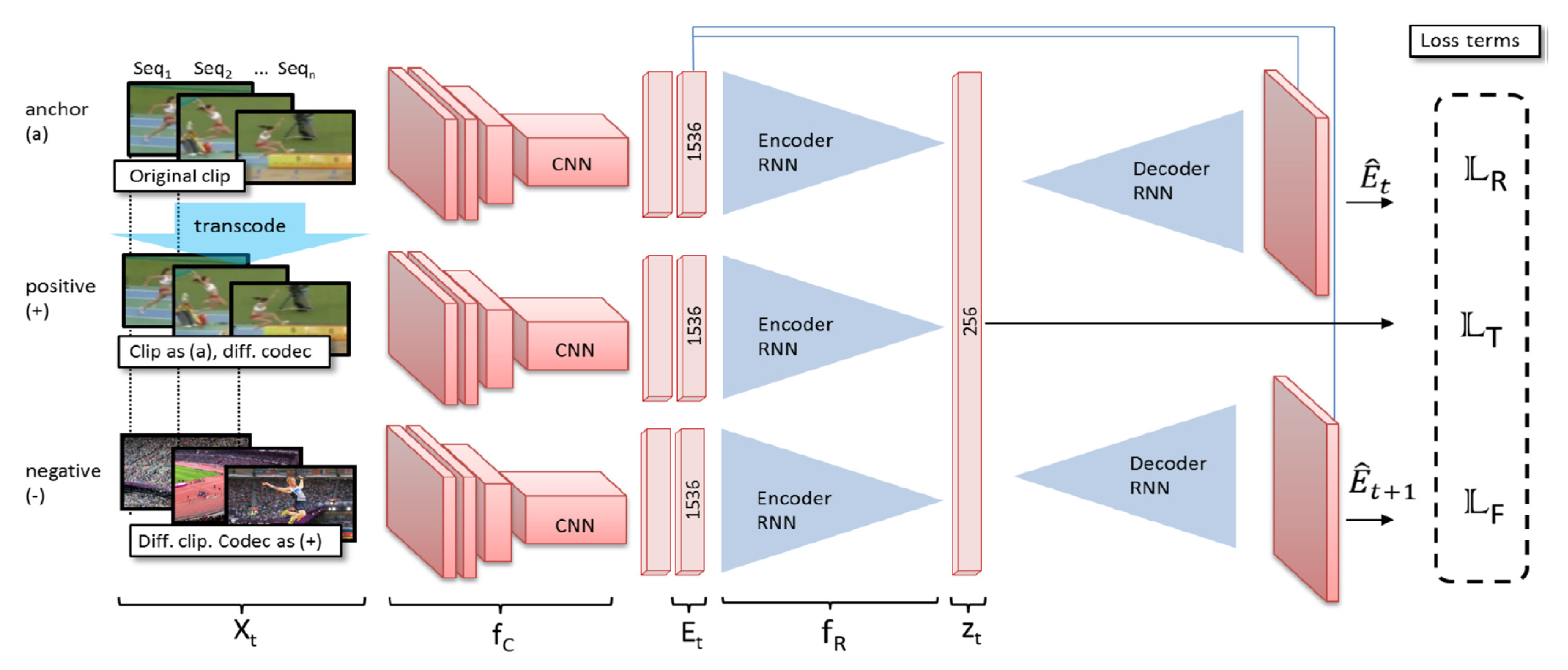
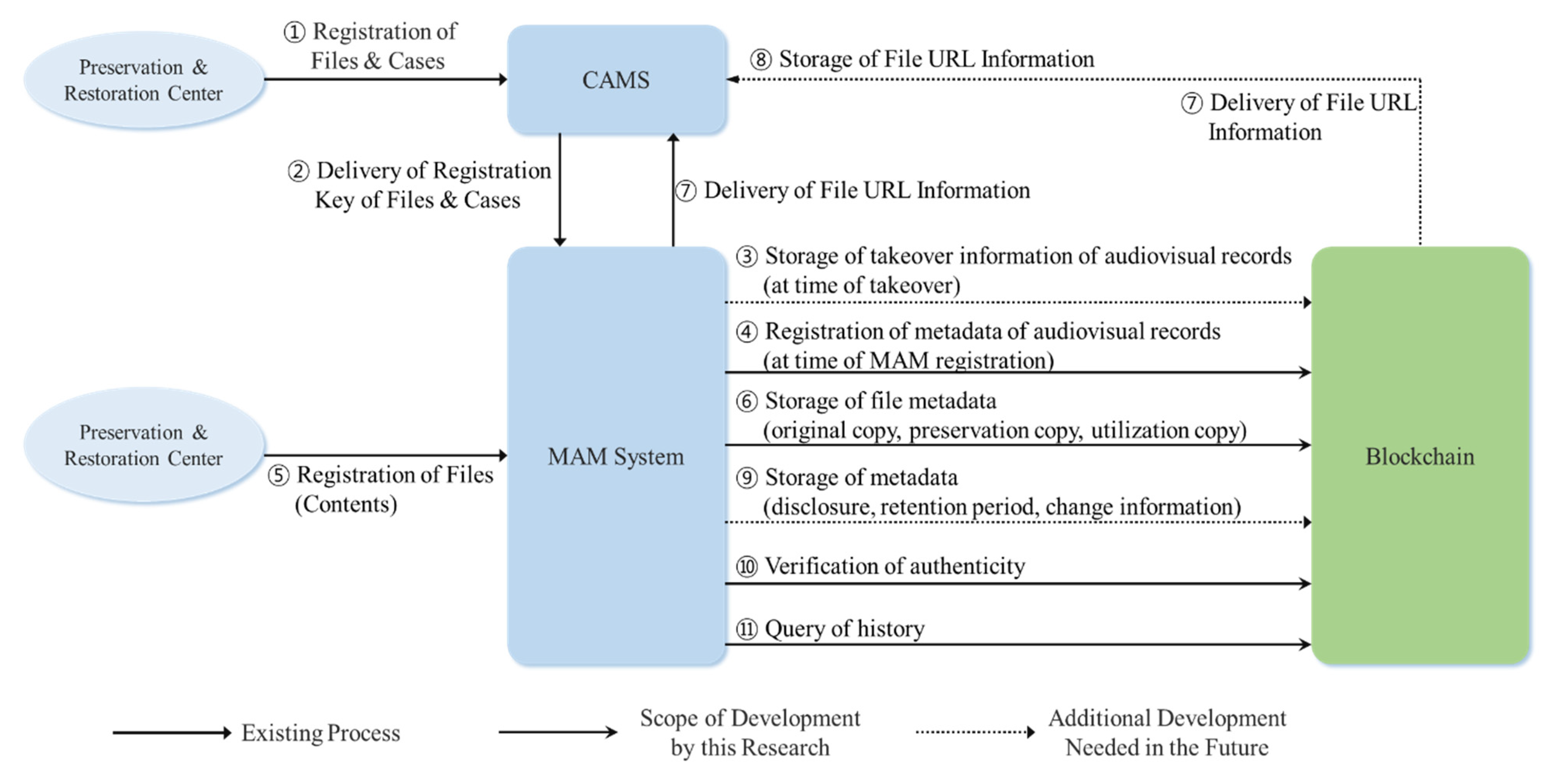
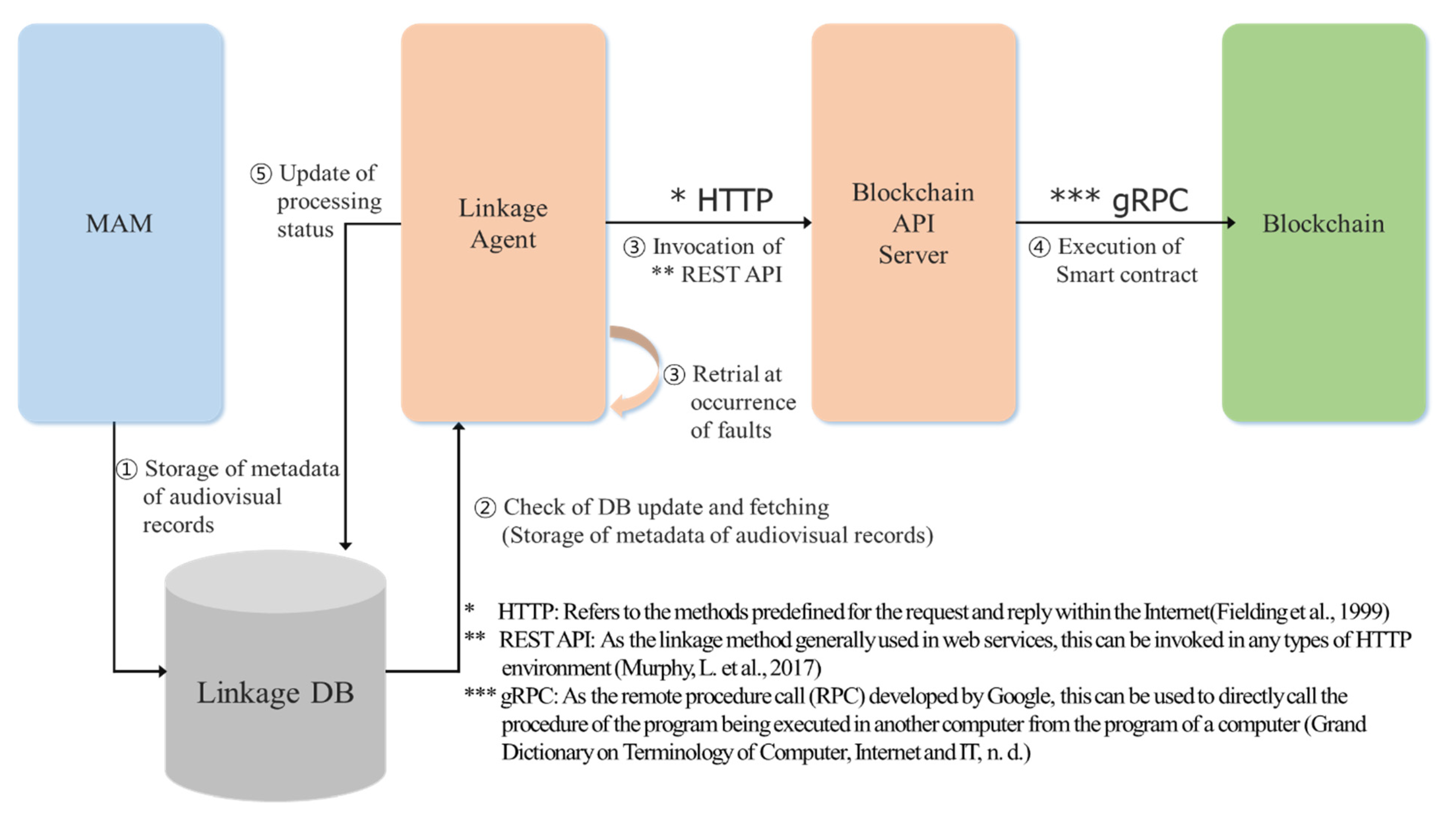
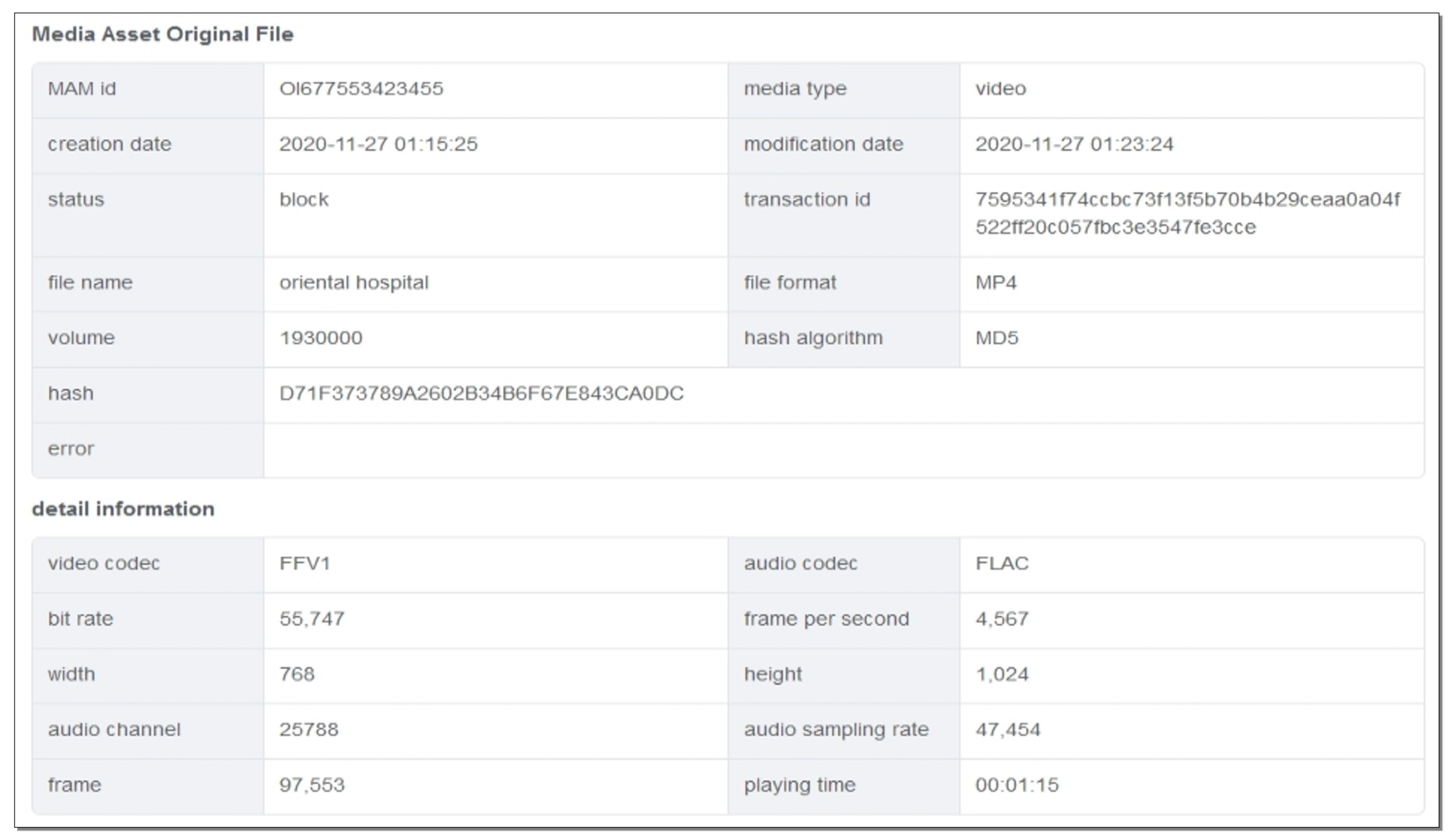




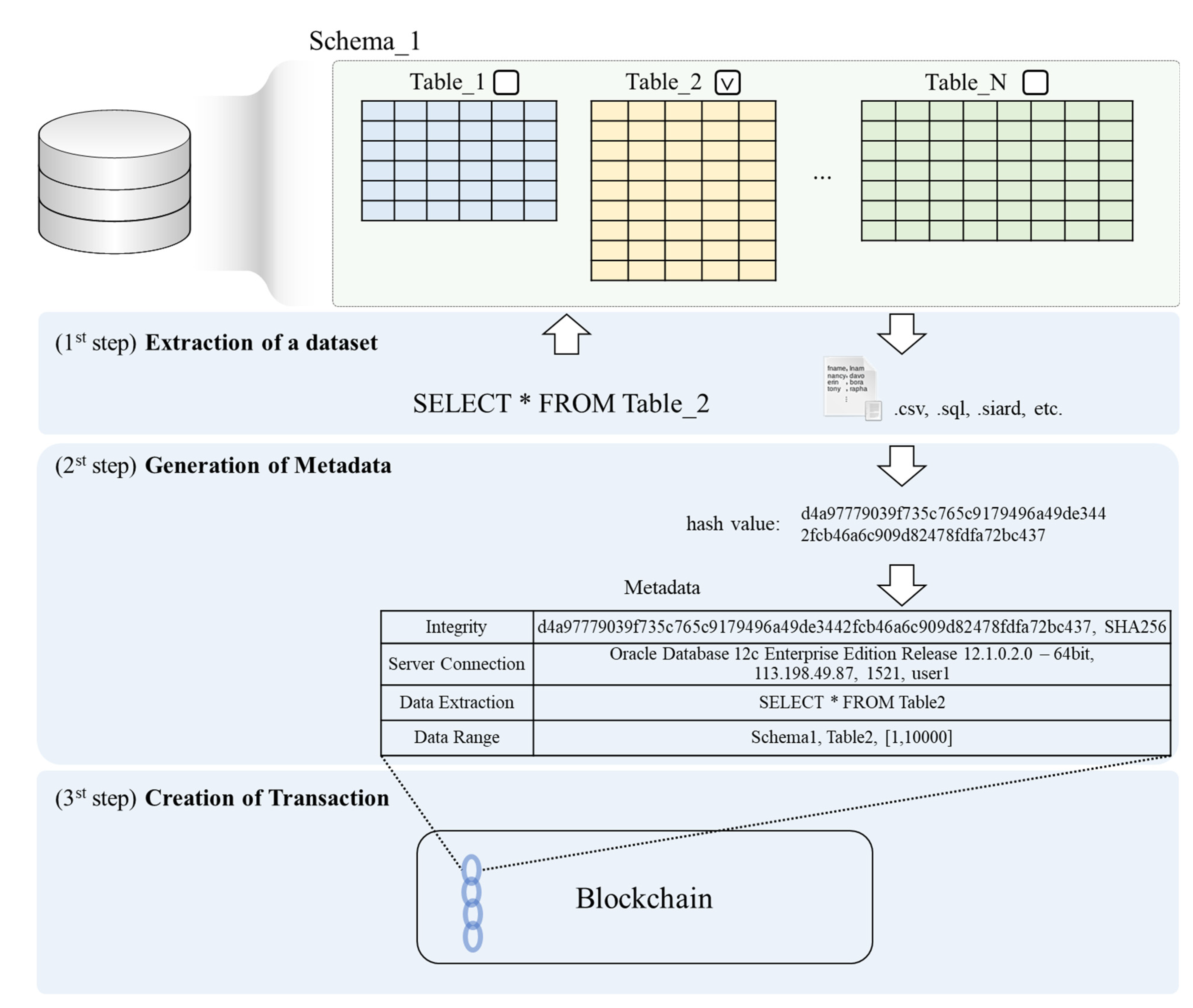
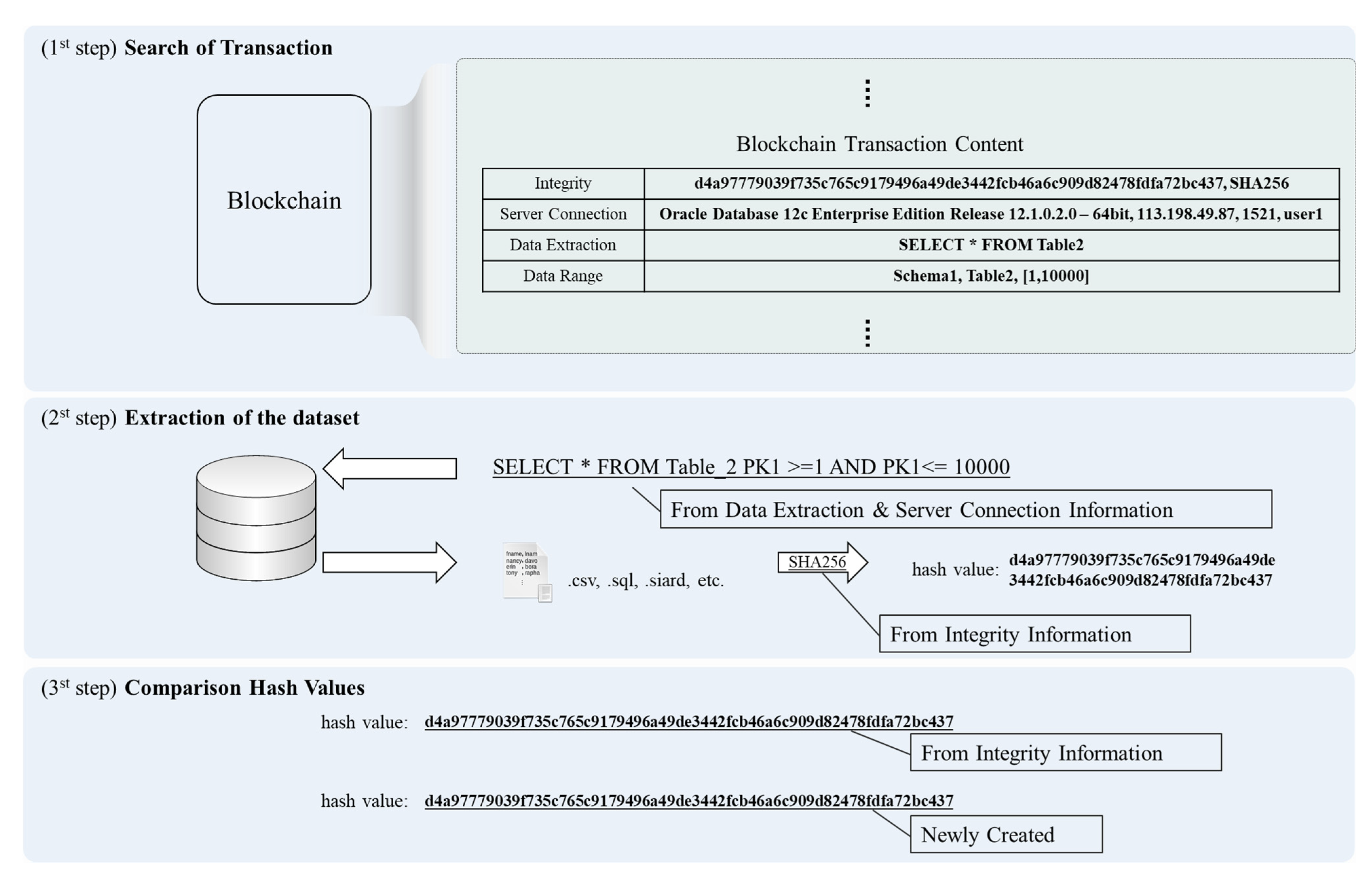
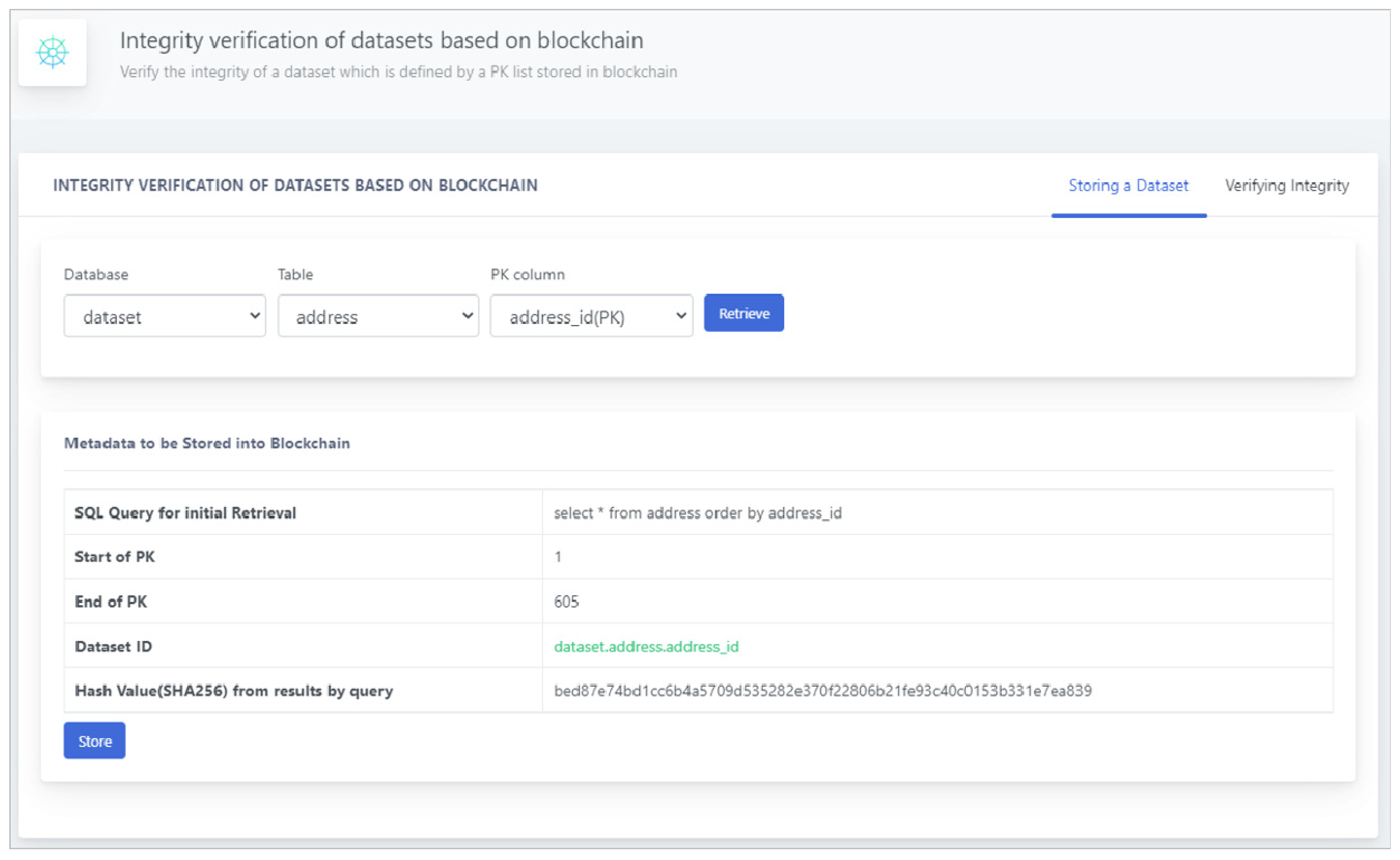

| Information Type | Content | Ex. |
|---|---|---|
| Integrity | hash value, hash function type, etc. | d4a97779039f735c765c9179496a49de3442fcb46a6c909d82478fdfa72bc437, SHA256 |
| Server Connection | DBMS software, IP address, Port Number, Account, etc. | Oracle Database 12c Enterprise Edition Release 12.1.0.2.0—64bit, 113.198.49.87, 1521, user1 |
| Data Extraction | SQL query or export command, etc. | SELECT * FROM Table 1 WHERE PK1 ≥ 1 AND PK1 ≤ 10000 or SELECT * FROM Table 1 WHERE PK1 IN (3,59,101,92) |
| Data Range | Schema information, Table information, PK range or PK list, etc. | Schema 1, Table 1, [1, 10,000] or Schema 1, Table 1, (3, 59, 101, 92) |
Publisher’s Note: MDPI stays neutral with regard to jurisdictional claims in published maps and institutional affiliations. |
© 2021 by the authors. Licensee MDPI, Basel, Switzerland. This article is an open access article distributed under the terms and conditions of the Creative Commons Attribution (CC BY) license (https://creativecommons.org/licenses/by/4.0/).
Share and Cite
Wang, H.; Yang, D. Research and Development of Blockchain Recordkeeping at the National Archives of Korea. Computers 2021, 10, 90. https://0-doi-org.brum.beds.ac.uk/10.3390/computers10080090
Wang H, Yang D. Research and Development of Blockchain Recordkeeping at the National Archives of Korea. Computers. 2021; 10(8):90. https://0-doi-org.brum.beds.ac.uk/10.3390/computers10080090
Chicago/Turabian StyleWang, Hosung, and Dongmin Yang. 2021. "Research and Development of Blockchain Recordkeeping at the National Archives of Korea" Computers 10, no. 8: 90. https://0-doi-org.brum.beds.ac.uk/10.3390/computers10080090






